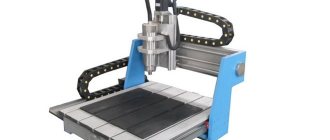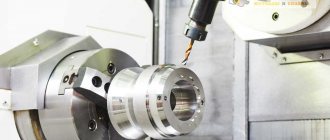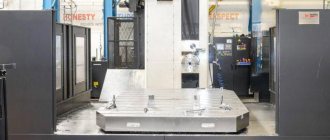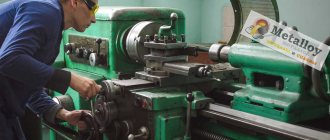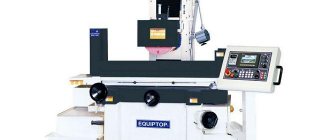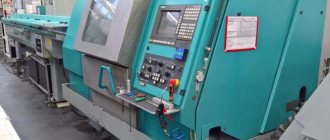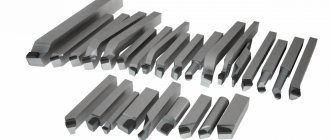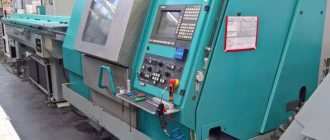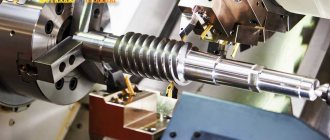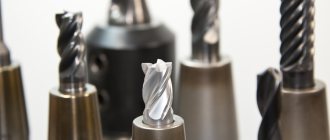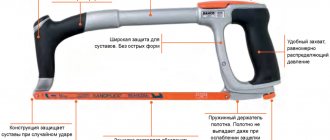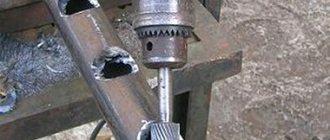When manufacturing various metal parts, it is almost impossible to do without the use of milling machines. Conveniently, a milling machine for metal work is equally successfully used both in production conditions and in home workshops. It should be noted that equipment of this category is the most common in the field of metalworking.
Widely versatile metal milling machine
Almost all modifications of milling equipment operate on a similar principle and have a similar design. The differences between the models of such machines may lie in their functionality, which is formed by adding additional components and systems to their design.
Types of milling machines
Let us list the main types of milling machines, each variety of which is sometimes very significantly different from its counterparts and has a lot of differences in design and operational purpose.
Vertical milling
A fairly common type of machine in this category is a vertical milling machine. The working tools for such machines are shaped, cylindrical, end mills, and drilling operations can also be performed. A vertical milling machine allows you to perform the following technological operations: processing gears and various grooves, corners, frame elements, vertical and horizontal surfaces on parts made of various metals.
Vertical milling machine without console
Milling machines of this type do not have a console in their design, and their work table moves along guides located on the equipment frame. The vertical type machine, due to its design features, is characterized by high rigidity, which makes it possible to process metal parts with a high level of quality. The gearbox of such a milling machine is located in the spindle head.
Vertical milling machines are divided into two categories, distinguished by the presence of a console in the design. Their names are respectively:
- non-cantilever vertical milling machines;
- vertical cantilever milling machines.
A metal milling machine with a console is distinguished by the fact that its spindle and sleeve can move relative to the axis of the equipment. The differences in their design can be clearly seen in the photo.
Cantilever milling modification
Horizontal milling
The horizontal milling machine is notable for the fact that its spindle is located in the horizontal plane. The equipment of this group allows processing parts that have small overall dimensions. The versatility of this machine is ensured by the fact that end, cylindrical, shaped, end and corner cutters are used as working tools. A horizontal milling machine in its standard configuration does not make it possible to process a part along a screw surface; for this it must be equipped with auxiliary devices.
Horizontal milling machine
The design of machines of the horizontal milling group allows their work table to be installed parallel, as well as perpendicular to the spindle axis. All working and power units of this equipment are located on the frame, and the gearbox, which controls the spindle rotation speed, is located in its inner part.
Drilling and milling
Machines belonging to the drilling and milling category are designed for processing not only horizontal and vertical surfaces, but also inclined ones. They are also used to process grooves of large parts.
This metal milling machine has a drilling and milling head that allows you to perform drilling operations at an angle and process surfaces located at an angle to the horizontal axis. A distinctive feature of this machine is that its working head can operate in reverse mode.
Drilling and milling machine (non-cantilever)
Due to their versatility, due to the ability to carry out the two most popular operations, such machines are very profitable from an economic point of view, as well as in terms of saving space on the production site. Few home craftsmen would also refuse to have such a machine at home, since such a device combines several effective and useful devices in its design.
Universal
Such machines for metal work are very convenient to use for equipping private workshops or small workshops specializing in mechanical repair work. Universal machines allow processing of horizontal and vertical planes, as well as spiral surfaces and stamps.
Universal milling machine
This metal cutting machine is distinguished by a number of design features: the spindle assembly, the box, as well as the main components are located in the inner part of the bed. The design of the machine provides vertical and horizontal guides along which its console and work table move. In addition, the working surface can be adjusted in relation to the equipment spindle at the desired angle, which allows it to be used to process metal parts with even the most complex configuration.
Tabletop
Such very compact equipment, installed at home, in workshops, educational institutions and in small production workshops, allows you to perform various technological operations: cutting threads, drilling holes, processing all kinds of parts and materials with various types of cutters, etc.
Processing workpieces on milling machines of this type is distinguished by good accuracy, since their design has exceptional rigidity (of course, with proper installation). These cantilever milling machines are distinguished by their high productivity, which makes it possible to use them for the production of products in serial batches. Despite their high productivity and wide functionality, such machines are distinguished by low energy consumption and compact dimensions, which allows them to be conveniently placed even in a small area.
Tabletop milling machine
CNC milling
Devices of this kind are actively used in all kinds of industries for the mass production of high-quality parts. CNC machines are highly productive and are capable of providing unsurpassed quality not in a single copy, but on a production line, which makes them indispensable equipment in any serious production. The differences between such machines and all other types of milling machines are so significant that they require a detailed analysis in a separate article.
CNC machines, which process parts made of various metals with high productivity and accuracy, have one big drawback: a decent cost, but it is fully compensated by the following positive factors:
- reducing the need for qualified specialists in production;
- high productivity relative to manually operated machines;
- reduction of production cycle times;
- accelerating the transition to the production of new products.
CNC milling machine
CNC milling machining centers
The difference between such devices and the previous type of milling machines lies in even greater versatility, even higher accuracy and speed of operation. The range of work that such devices can perform includes a huge list of operations and processes that are in demand in the most high-tech and critical industries. Modern software for machining centers is produced by large global companies. The work of machining centers will be discussed in detail in a separate article.
5-axis CNC milling machining center
Benchtop CNC
A separate category consists of types of milling machines equipped with CNC (computer numerical control). Such equipment belongs to the professional category; its operation is controlled by special controllers that must be connected to a computer device. Just like other types of milling machines, CNC models can perform various technological operations on metal: drilling, countersinking, boring, etc.
Tabletop CNC machine
Widely versatile
Having such a machine at your disposal, you can perform any type of milling operations with almost any material. If we compare a horizontal milling machine and a universal-type device, its main difference is that its design includes an additional spindle head, which is mounted on a special movable trunk and has the ability to rotate at any angle in relation to the workpiece.
Conveniently, both spindles of such a machine can process parts both jointly and autonomously. Another overhead milling head can also be installed on the rotary head, with which you can process metal parts of an even more complex configuration - drill, boring, countersinking, etc.
Widely versatile milling machine
There are also models of widely universal machines that do not have a console panel in their design. Instead, a carriage is installed that moves along vertical guides. The vertical slide of this carriage can accommodate various devices (for example, an index table). Such machines are somewhat cheaper, but are also capable of performing a fairly large list of technological tasks.
When choosing a milling group machine, you first need to decide what it is needed for. This approach to choosing equipment will give you the opportunity to purchase it in full accordance with your needs, and also not overpay for those functions that you will never need.
Manufacturers
You can find many models of vertical milling machines on the world market. They differ in design, power, additional functions, and appearance. Among the most popular companies are:
- Jet. The products are represented in several lines. Among them there are professional and simple models. Some buyers complain about the unstable base, which they have to weigh down themselves.
- Anchor Corvette. Budget routers for beginners. Suitable for roughing metal workpieces. However, for more accurate and efficient work, you need to choose professional equipment.
- Proma. Another well-known company. The company has gained popularity thanks to the manufacture of powerful, productive machines that are used in enterprises, car services, and private workshops.
Industrial equipment for serial production of parts is ordered from factories.
Operating principle of milling machines
Almost all milling machines operate on the same principle. The only differences can be in their functionality.
Basic elements of a milling machine
The main structural elements of such machines are: a supporting frame, a work table, clamping elements, a collet and a collet chuck in which the working tool is fixed, a portal with a spindle fixed to it, which can move, and a drive electric motor.
The working tool of any milling machine is a cutter, the design and dimensions of which depend on the configuration of the part to be processed. The working tool is fixed in the collet chuck using a shank, and rotation is transmitted to it from the drive electric motor through a gear system. The main purpose of the cutter is to remove an excess layer of metal from the workpiece, which, in fact, is the essence of processing on such a machine.
The machine spindle is placed on a movable portal, the movements of which are controlled by special controllers in the case of CNC equipment. The electronic system of such equipment includes CNC (computer numerical control) controllers, auxiliary system elements and connecting parts. The operating principle of CNC machine models is as follows: a special program reads the drawings of the part that needs to be obtained as a result of processing, generates electronic commands that are transmitted to the working part of the machine.
Widely universal machines, which are a hybrid of horizontal and vertical models, deserve special attention. Their design also includes a collet, collet chuck and clamps, but the gearbox of such machines transmits all movements from a single electric motor. Their distinctive feature is the presence of a manual mode, with which you can control the operation of the running unit.
Example of a kinematic diagram (cantilever milling machine)
Additional elements include a five-axis metal milling machine and engraving equipment. Such equipment is equipped with additional clamping elements that allow you to install an engraver on it. The tool of such equipment rotates due to the cardan shaft, with which it is directly connected to the electric motor.
The simplest in design are manual metal milling machines. Such equipment has low power, and its design consists of a collet with a collet chuck, a rotor, a drive head and an electric motor. Naturally, the functionality of such a machine is also limited: it can be used to perform only the simplest milling operations.
The service life of a manual milling group machine is also low and amounts to no more than 10,000 hours. The weakest components in such equipment, which are the first to fail, are the collet and collet chuck, clamps, attachment and spindle. But its low reliability and durability are fully compensated by its low cost. It makes sense to purchase it if you plan to use it irregularly.
